DepthCamera
Latest
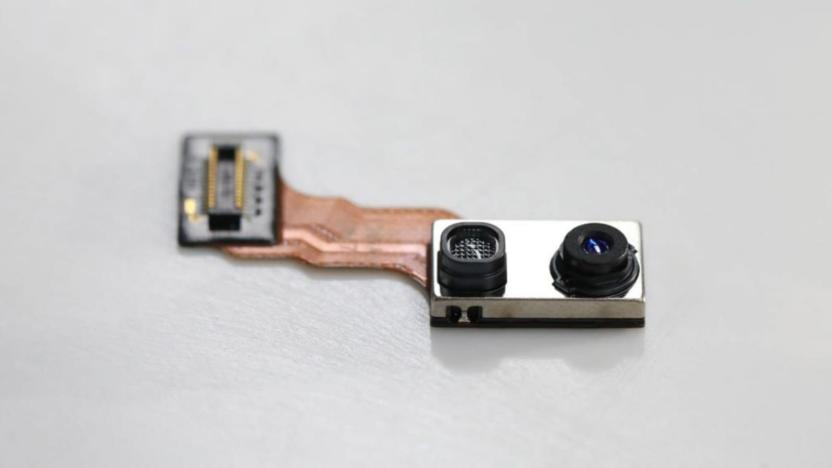
LG explains how the G8 ThinQ's tiny gesture sensor works
LG has revealed more details about the "Time of Flight" sensor that will likely power the G8 ThinQ's touchless gestures. Built by LG's Innotek division, it reflects infrared light off of a subject, measures how long it takes to return and uses the data to calculate depth. LG said that the tech works over "long" distances, while consuming less power than other 3D tech. As such, it's suitable for face detection ID tech, motion sensing, AR, and more.

Intel RealSense tracking camera helps robots navigate without GPS
Intel is back with another RealSense camera, but this one has a slight twist: it's meant to give machines a sense of place. The lengthily-titled RealSense Tracking Camera T265 uses inside-out tracking (that is, it doesn't need outside sensors) to help localize robots and other autonomous machines, particularly in situations where GPS is unreliable or non-existent. A farming robot, for instance, could both map a field as well as adapt on the fly to obstacles like buildings and rocks.
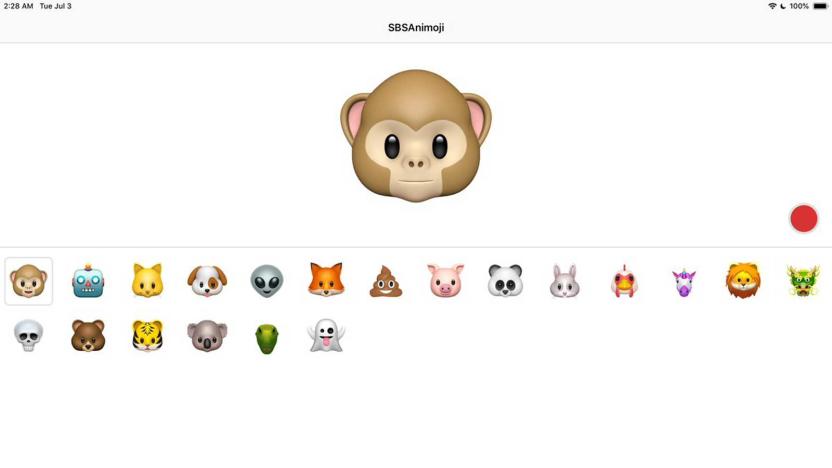
iOS 12 code hints at iPad with Face ID
Apple's iOS 12 has hinted from the outset that an iPad with a notched display was in the works (the status bar conspicuously made room for it). If you were wondering whether or not that meant an iPhone X-style TrueDepth camera and Face ID, though, you can rest assured after today. Developer Steve Troughton-Smith has discovered that AvatarKit, the framework behind Animoji and Memoji, now supports the iPad. Given that you need a TrueDepth camera for these face-tracking personas to work, and the iPad Pro hasn't been updated in over a year... well, you do the math.

Intel's new cameras add human-like 3D vision to any machine
Intel has released two ready-to-use RealSense depth cameras, the D415 and the D435, that can add 3D capabilities to any device or machine. They both come in a USB-powered form factor and are capable of processing depth in real time, thanks to the chipmaker's new RealSense vision processor D4. The models work indoors and outdoors in any lighting environment, so they can be used for almost any machine that needs a depth camera. Those include drones meant to soar the skies and robots with AR/VR features.

Microsoft stops selling the Xbox One Kinect adapter
You knew Kinect peripherals weren't long for this world when Microsoft stopped producing the Kinect in October, but it's still a sad day. The company has stopped making the Xbox Kinect Adapter that lets Xbox One S, Xbox One X and Windows PC users attach the depth-sensing camera without the presence of the original Xbox One's proprietary port. Microsoft wants to focus its efforts on "higher fan-requested gaming accessories," a spokesperson told Polygon. In short: there wasn't exactly rampant demand for an adapter to support a peripheral that had effectively been declared dead.
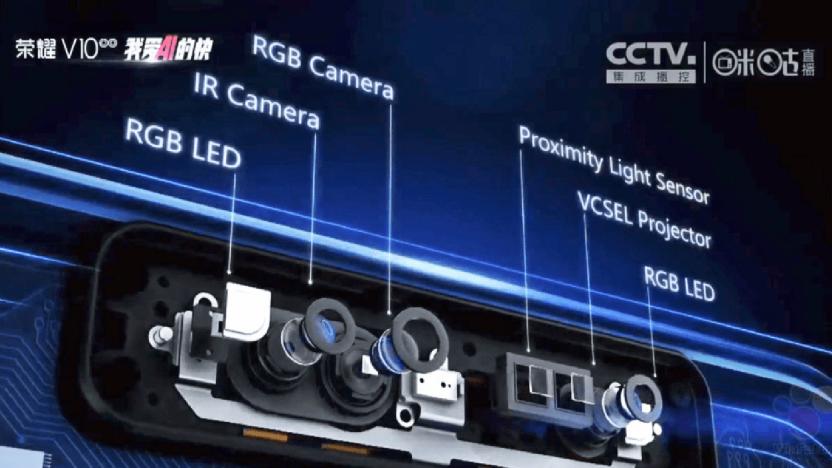
Huawei says it can do better than Apple's Face ID
Huawei has a history of trying to beat Apple at its own game (it unveiled a "Force Touch" phone days before the iPhone 6s launch), and that's truer than ever now that the iPhone X is in town. At the end of a presentation for the Honor V10, the company teased a depth-sensing camera system that's clearly meant to take on Apple's TrueDepth face detection technology. It too uses a combination of infrared and a projector to create a 3D map of your face, but it can capture 300,000 points -- that's 10 times as many as the iPhone X captures, thought Huawei's version currently takes 10 seconds to rebuild this more precise 3D model.
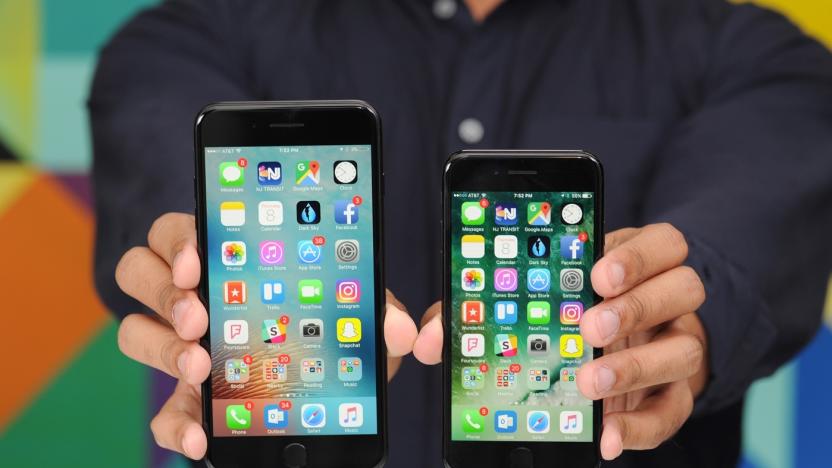
Next iPhone might have depth-sensing front camera
It's that time of year, folks. Rumors of what the next iPhone will be like are coming in hot and heavy. Last week, well-connected Apple analyst Ming-Chi Kuo noted that the new handsets would nix the home button for a touch-friendly "function area." Now there's another bit of info. In a KGI Securities report detailed by 9to5Mac, the analyst explains that the upcoming OLED iPhone will feature a "revolutionary" front camera that's capable of sensing 3D space via infrared.

Google app contest winners show what Project Tango can do
Sure, Google and crew can put together some nice tech demos for Project Tango's advanced depth sensing and motion tracking, but what happens when everyday developers take a crack at it? You're about to find out. Google has announced the winners of its Project Tango App Contest, and most of them aren't what you'd expect given the technology. The overall winner is HeroicArcade's WeR Cubed Tango, a 3D puzzler that relies more on motion than the usual screen taps.

Apple bought a company that makes depth-sensing cameras
Your next iPhone's camera may be decidedly more sophisticated. Apple has snapped up LinX, a camera technology company that specializes in depth-sensing cameras that can create 3D image maps -- think Intel's RealSense, or the Duo Camera in the HTC One M8. While Apple isn't commenting on its future plans for the company, LinX's hardware allows for post-capture refocusing, DSLR-like soft backgrounds and better low-light photography. None of those features are new in the smartphone world (numerous devices offer one or more similar options), but they'd be welcome additions if you've ever flubbed an iPhone shot and wished you could fix it after the fact. Photo by Will Lipman.

Google's 3D-sensing Project Tango is no longer an experiment
Yet another project is graduating from experiment to proper part of Google. Only two weeks ago, Glass left the confines of the Skunk Works-like Google X and became its own division headed up by Nest co-founder Tony Fadell. Now Project Tango, the 3D-sensing and -mapping concept, is moving on from the ATAP (Advanced Technology and Projects) labs to become a part of the company proper. Unfortunately what that means for the technology or what products it might eventually end up in isn't exactly clear. Will the next Nexus sport a depth-sensing IR camera? Maybe. Or perhaps they'll be used to build more advanced home automation and home monitoring tools for Nest. All we do know is that Tango will live on, even if the name "Project Tango" eventually fades away.

Watch how Intel's depth cameras let you play 'drone ping pong'
It's all good and fun when you get to fly a drone, but there are times when you wish it could fly around by itself without crashing into things. As we found out at Intel's CES keynote just now, one solution to this is to equip the machine with depth cameras; and in Ascending Technologies' case, it went with six of Intel's RealSense depth cameras for its AscTec Firefly. The result is a drone that pushes itself away when people approach it, which allowed the demonstrators to humor the audience with a game of "drone ping pong": one player would walk up to the Firefly to pass it to another player. We also watched another Firefly clear an obstacle course autonomously, but trust us, the first demo is more entertaining (but maybe creepy for some). See for yourself after the break.

Project Tango teardown reveals the wonders of the phone's 3D sensing tech
Want to get a better understanding of Google's 3D-sensing Project Tango smartphone beyond the usual promo videos? iFixit is more than happy to show you now that it has torn down the device for itself. The close-up identifies many of the depth mapping components in the experimental handset, including the infrared and fisheye cameras (both made by OmniVision), motion tracking (from InvenSense) and dual vision processors (from Movidius).

This is what it's like to operate an arcade claw machine using just gestures (video)
We knew gesture cameras will be making their way to computers and mobile devices this year, but seeing one on the classic claw crane was a pleasant surprise for us. This IDF tech demo was courtesy of a Guangzhou company called The Best Sync, and according to Intel VP Doug Fisher, it only took three days to develop this project using Intel's RealSense technology -- as represented here by the Creative Interactive Gesture Camera (co-developed by SoftKinetic). The gestures were simple: move your hand in one of the four directions to position the claw, and clench your fist to drop it on the dolls. The joystick replacement didn't make the game any easier, but it seemed like everyone still had fun with it. Well, at least this author did, as you can see in our video after the break.

The next mobile imaging war won't be waged over megapixels
For the past several years, improvements in smartphone cameras have followed the "more megapixels" mantra. Samsung's Galaxy S5 is up from 13 to 16 megapixels; Sony's new Xperia Z2 packs a 20.7-megapixel Exmor model; and Nokia's Lumia 1020 with PureView is a 41-megapixel monster. However, Google's recent sensor-laden smartphone prototype, Project Tango, could herald a new direction. Though Mountain View is focused on 3D mapping, so-called depth camera tech could dramatically improve all the pictures you take with your smartphone. By using two lenses with different focal lengths, for example, you could zoom in on subjects with quality that rivals bulky optical zooms. It could also eliminate a number of other shortcomings without adding an awkward hump like the one seen on the Lumia 1020. You could soon have much better light sensitivity, less noise and depth of field control that rivals a DSLR. The benefits are clear, but Google is not alone in its pursuit. The battle for a better smartphone camera is on, and you could be the one to reap the rewards.

SoftKinetic's 3D scanning solution aims to popularize MakerBot's printers
SoftKinetic, the 3D gesture middleware provider for Intel and Ubisoft's Just Dance 2014 for the PS4, is once again catching our attention by announcing its strategic partnership with MakerBot at CES. These two companies will work on optimizing the former's time-of-flight depth camera technology for 3D scanning, which will hopefully help popularize MakerBot's 3D printers. While we didn't get to see objects being printed live at the show, SoftKinetic's CMO Eric Krzeslo surprised us by how quickly he could scan a person's face using his depth camera. The data was then sent to Volumental's impressive cloud service, which returned a printer-ready render in a matter of minutes. See for yourself in our video after the break. SoftKinetic also announced that NVIDIA's Tegra Note 7 platform comes with the former's gesture recognition middleware, as well as support for its DepthSense 3D Time-of-Flight USB camera. This means OEMs or developers will be able to quickly implement short-range ("as close as 6 inches away") gesture control on NVIDIA's tablet reference design. At this rate, it shouldn't be long before we can control our tablets from afar -- it's just too much effort to reach over one's bowl of noodles to poke the screen.
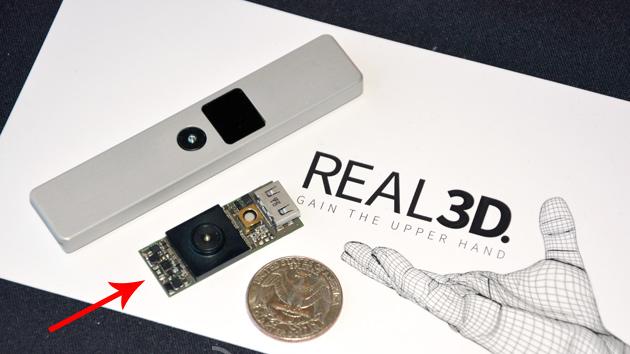
Exclusive: PMD's CamBoard Pico XS is the tiniest gesture camera we've ever seen (video)
Just as we were wrapping up CES today, we caught up with our friends over at PMD Technologies who surprised us with a little exclusive. What you see above is the new CamBoard Pico XS gesture camera that's dwarfed by the Pico S -- the one we saw at Computex -- next to it. This tiny module is only 4mm thick, 39.5mm long and 15.5mm wide, making it 1.5mm thinner and almost half as long as its predecessor, while still packing the same Infineon IRS1010C 3D image sensor chip. Given the size plus the fact that it already uses MIPI (Mobile Industry Processor Interface) instead of USB, the Pico XS is truly integration-ready for OEMs. The main changes that enabled this size reduction are the smaller lens -- which is compensated by a sharper laser illumination (but still 850nm infrared) -- plus the removal of the aluminum heat sink (which is actually the chassis), courtesy of a much lower power consumption. Instead of a typical 1W you get on the Pico S, the Pico XS requires less than 50mW typically (at 25fps) and 350mW max (up to 45fps). Temperature-wise it goes up by just 10 degrees Celsius at most, apparently. Despite the slightly reduced viewing angles, we've been told that this smaller depth camera offers the same performance as before. That certainly seems to be the case after this author tried it using PMD's Nimble UX middleware (co-developed by 3Gear Systems), which is able to do two-hand skeletal tracking down to finger level, as shown in our video after the break.

Toshiba's new dual camera module brings 'deep focus' imaging to smartphones
Remember when dual camera modules on smartphones were all the rage? Toshiba is bringing them back -- only this time with technology that you're much more likely to use. Its new module uses two 5-megapixel cameras to record depth and images at the same time, producing a "deep focus" picture where everything is sharp. The technique offers a Lytro-like ability to refocus, even after you've taken the shot; it also provides gesture control and very fast digital autofocusing. You'll have to wait a while before you're snapping deep focus vacation photos, though. Toshiba doesn't expect to mass produce the sensors until April, and finished products will likely come later.

Intel's 3D camera technology detects emotions and eyes, gives Kinect some competition
We know that Intel sees 3D cameras as the future of computing, and the company's Anil Nanduri just provided a few hints of what that future may involve. He tells Network World that the depth-sensing technology can recognize emotions, such as happy smiles. It can also track your gaze; a camera can detect when readers are stumped by unfamiliar words in a book, for example. The technology's shape detection is accurate enough that it can even scan objects for 3D printing. We won't get a true sample of the technology's potential until Creative ships its Senz3D camera before the end of the current quarter. Nonetheless, it's already evident that Microsoft's next-generation Kinect for Windows will have some real competition on its hands.

PMD and Infineon to enable tiny integrated 3D depth cameras (hands-on)
After checking out SoftKinetic's embedded 3D depth camera earlier this week, our attention was brought to a similar offering coming from Germany's PMD Technologies and Infineon. In fact, we were lucky enough to be the first publication to check out their CamBoard Pico S, a smaller version of their CamBoard Pico 3D depth camera that was announced in March. Both reference designs are already available in low quantities for manufacturers and middleware developers to tinker with over USB 2.0, so the two companies had some samples up and running at their demo room just outside Computex. %Gallery-190502%

SoftKinetic teases embedded 3D depth camera, coming to Intel devices next year (hands-on)
At Intel's Computex keynote earlier today, the chip maker teased that it expects embedded 3D depth cameras to arrive on devices in the second half of 2014. Luckily, we got an exclusive early taste of the technology shortly after the event, courtesy of SoftKinetic. This Belgian company not only licenses its close-range gesture tracking middleware to Intel, but it also manufactures time-of-flight 3D depth cameras -- including Creative's upcoming Senz3D -- in partnership with South Korea-based Namuga. Read on to see how we coped with this futuristic piece of kit, plus we have a video ready for your amusement. %Gallery-190272%





